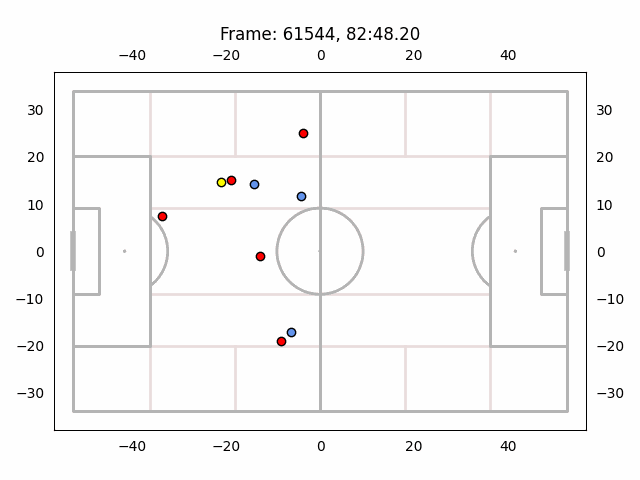Time-waste with tracking data, not possession
Stick through this short newsletter for a treat at the end
We've reached and passed the marker of the first international break for this men's European football season. And already the campaign against nonsense added time (CANAT) has professional footballers and UEFA in its corner. Just Arsène Wenger to try and persuade:
"I am against time-wasting," he said in a recent, wide-ranging interview with The Independent. "For the equity of the game, we want the team who wants to play to be rewarded. For the respect of the fan who sits in the stand, the teams to play, to encourage the teams not to waste time. After, it looks logical to me to fight against time-wasting. After that, the second question is how. Then you have to find the logic in it."
Wenger's logic is actually that players will hate the interminable added time so much that they'll stop time-wasting. Bit geography teacher, very "it's your own time you're wasting". But I'd like to draw out the line about fans again:
"For the respect of the fan who sits in the stand, the teams to play."
It's been a joke of mine that I'd welcome the time-wasting crackdown when it focuses on possession-heavy teams, and, look, I'm gonna double-down. It's a personal taste, but some of the most enjoyable atmospheres I've experienced at football matches have been when the whole thing gets a bit pantomime with one team just treading the time-wasting line. I've never been to a match where heavy possession, particularly lounging around on the ball in front of a non-pressing mid-block, has enhanced the experience.
The extent of this is that, watching one of England's two games over the break (I forget which) I found myself wishing for a shot clock.
Which clearly wouldn't work. But what would?
There's an average of around 20-25 shots per match, and around 55 ball-in-play minutes. That's about a shot every couple of minutes, which isn't so much a time limit as a calendar. You could try and force a higher number of shots with a lower figure on the shot clock, but we know from expected goals models how little value long-rangers have (and let's not get into two-goal lines for the moment, that's a little too much like copying the NBA). A paper by the KU Leuven research team in 2021 suggested that teams might be leaving a little bit of value by not taking more long shots, but the difference was pretty small.
No, it can't be a shot clock. However, a quick glance at FBref puts the average number of (Premier League) passes into the final third at - very conveniently - around 55-60 per game. A 45-60 second final third entry clock would be relatively close to what (Premier League) matches already have on average, while imposing a floor for minimum level of speediness.
There are then three other things that would need to be incentivised one way or the other. Long balls are potentially a problem - aesthetically as well as with concussion and CTE concerns. In terms of speedy play, counterattacking along the floor is clearly the most exciting way of playing football. Finally, the rule(s) need to be understandable to fans and easy to implement.
So, if anyone's running a football tournament and wants to try this out: 45-second final third clock but the opposition gets a drop-ball from where you last had possession if you don't manage it (refs can play advantage to manage the flow; multi-ball system on the sidelines) - if you lump it forward and don't win the first or second ball, you've just given the opponent possession well into your half.
Time-wasting is allowed for fatigue management reasons.
If you'd like to time-waste in a different way, you can read a write-up of a project I've been working on recently, using tracking data that Skillcorner made available in 2020. You'll find out what my 'heart attack' metric is, although the example below should give you a good idea. It also gets dangerously close to trying to create event data purely from tracking data. How silly. Link again to that write-up is here.
